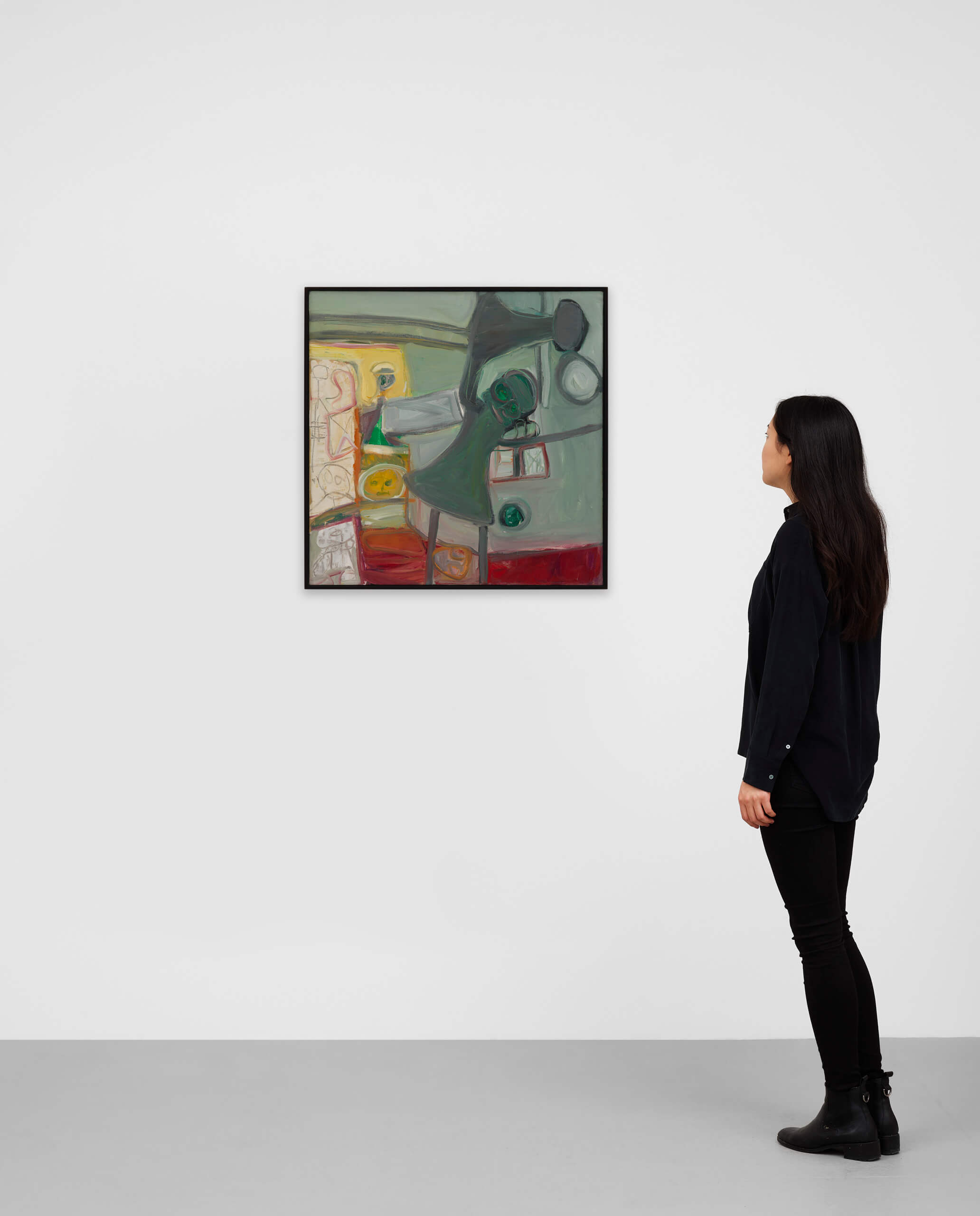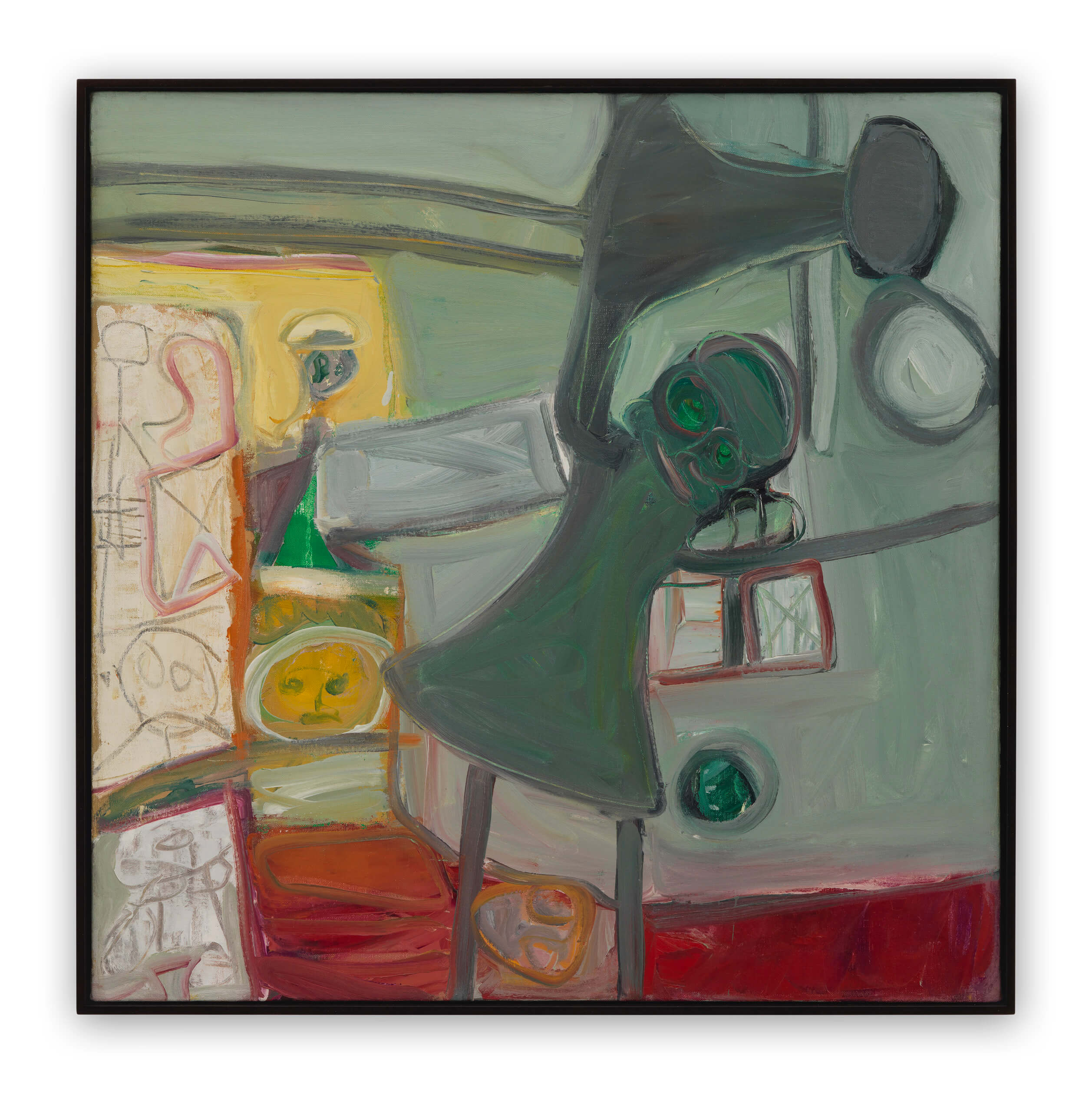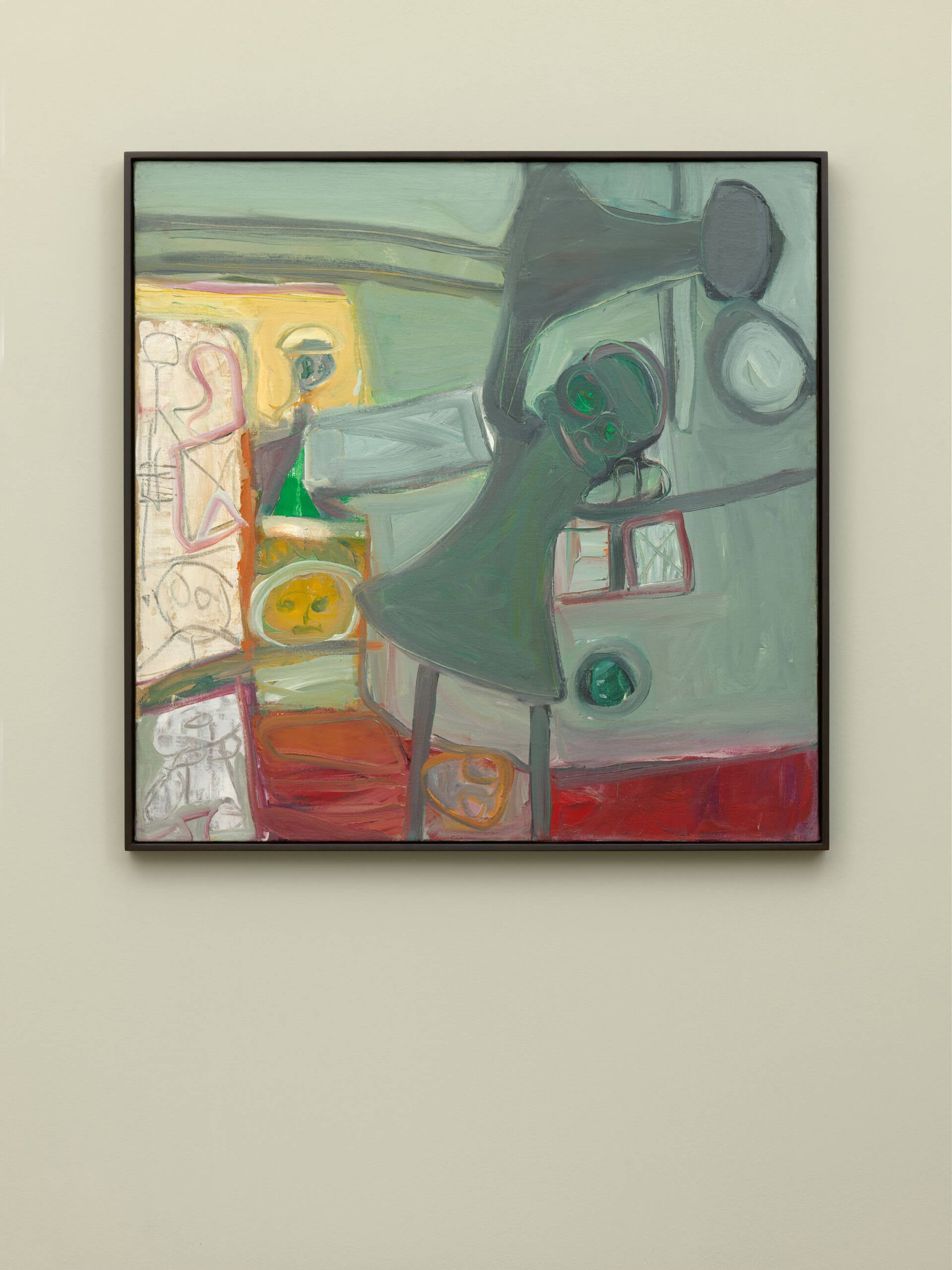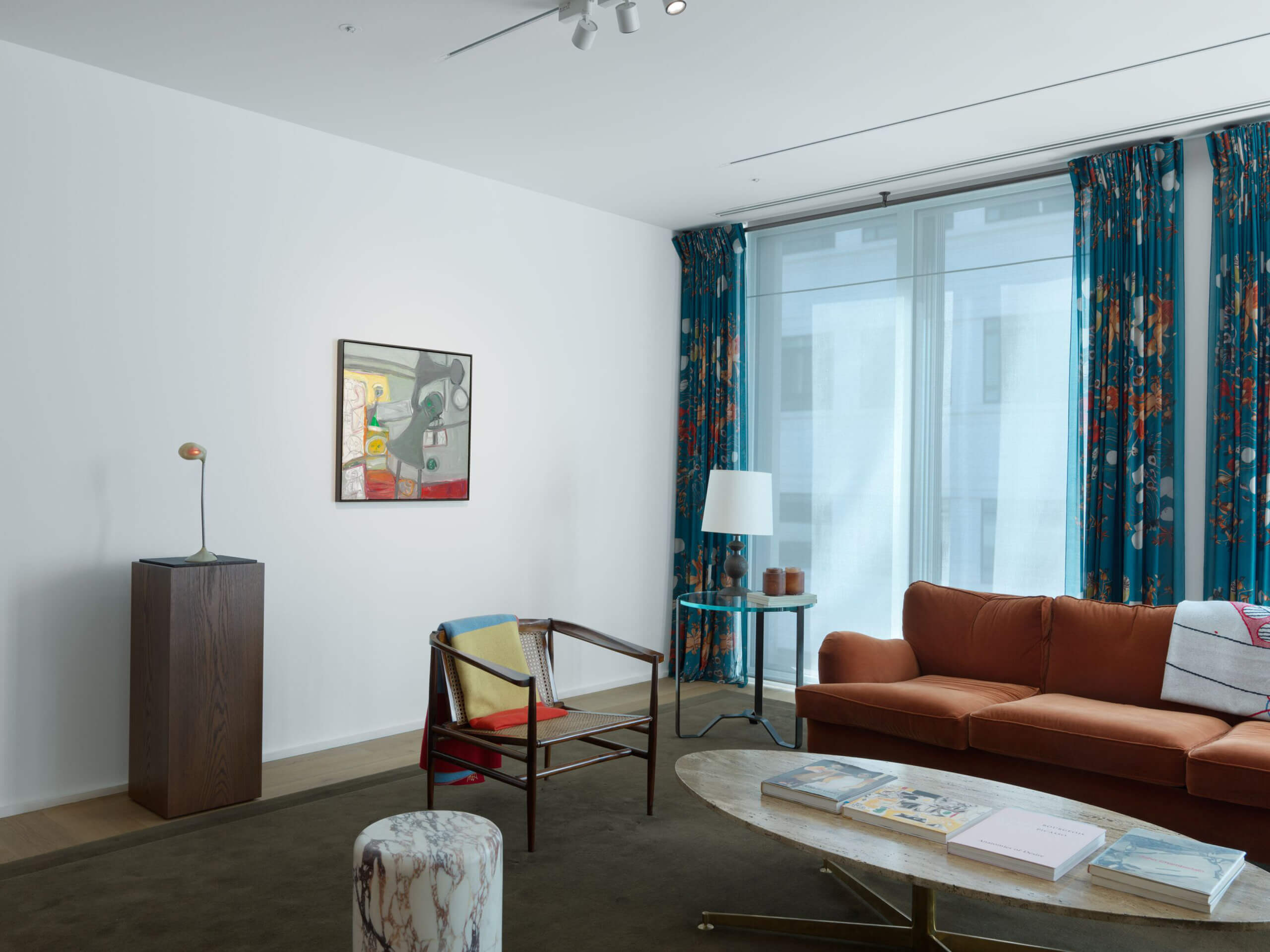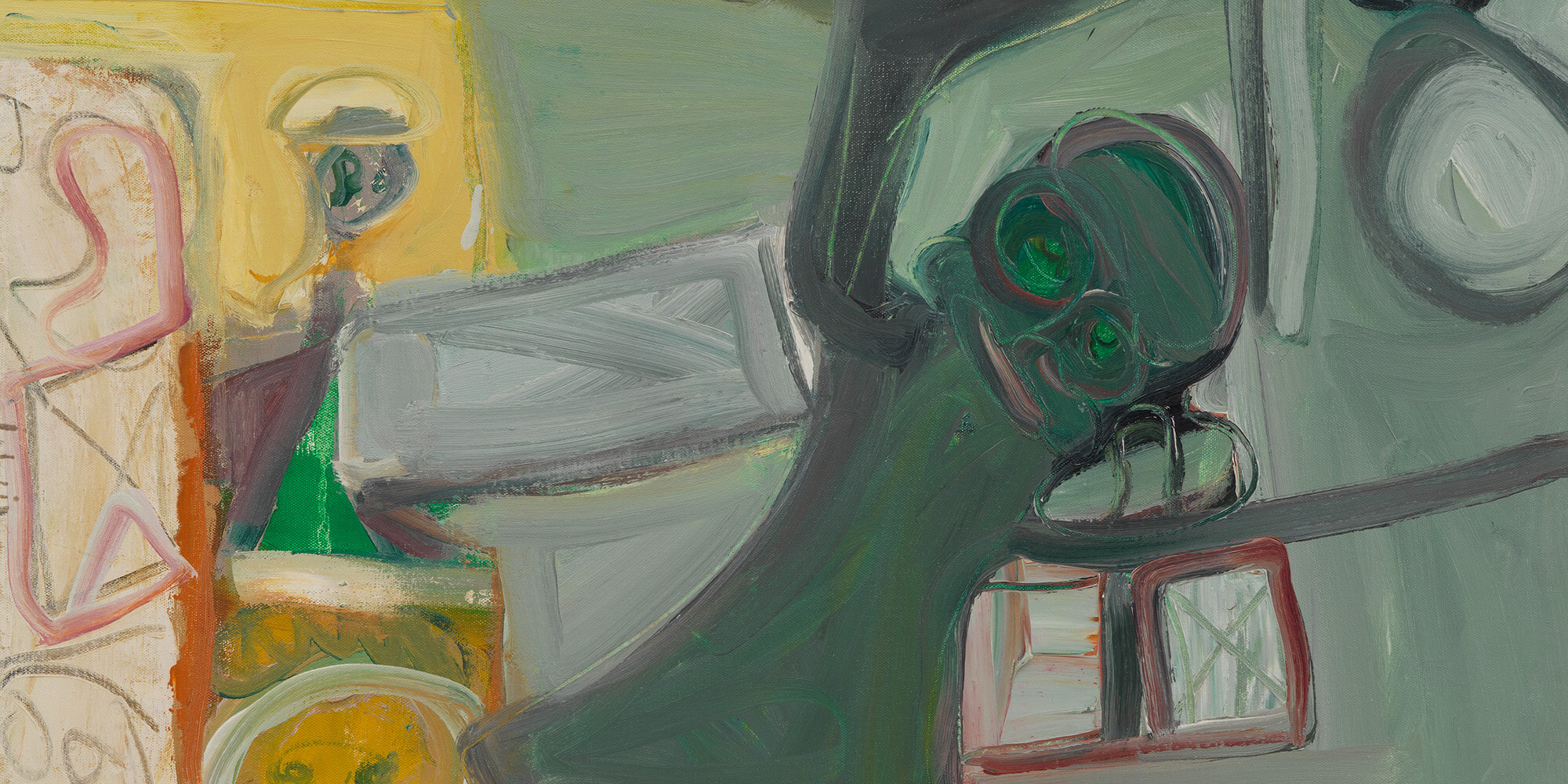
Eva Hesse
No title
No title
c. 1960 Oil on canvas 71.2 x 71.7 x 2.3 cm / 28 x 28 1/4 x 7/8 in 73.5 x 73.5 x 4 cm / 28 7/8 x 28 7/8 x 1 5/8 in (framed)
Made by Eva Hesse when the wunderkind was merely 24 years old, 'No title' (c. 1960) is a painting that seduces as it haunts and builds as it unravels. It is part of a group of paintings that Hesse made at the time, works acutely dubbed the 'Spectres' by Luanne McKinnon. Hesse had just graduated from the Yale School of Art under the tutelage of Josef Albers and Rico Lebrun — one a former Bauhaus director, the other a classical trained painter.
'Paint yourself out, through and through, it will come by you alone. You must come to terms with your own work not with any other being.'—Eva Hesse
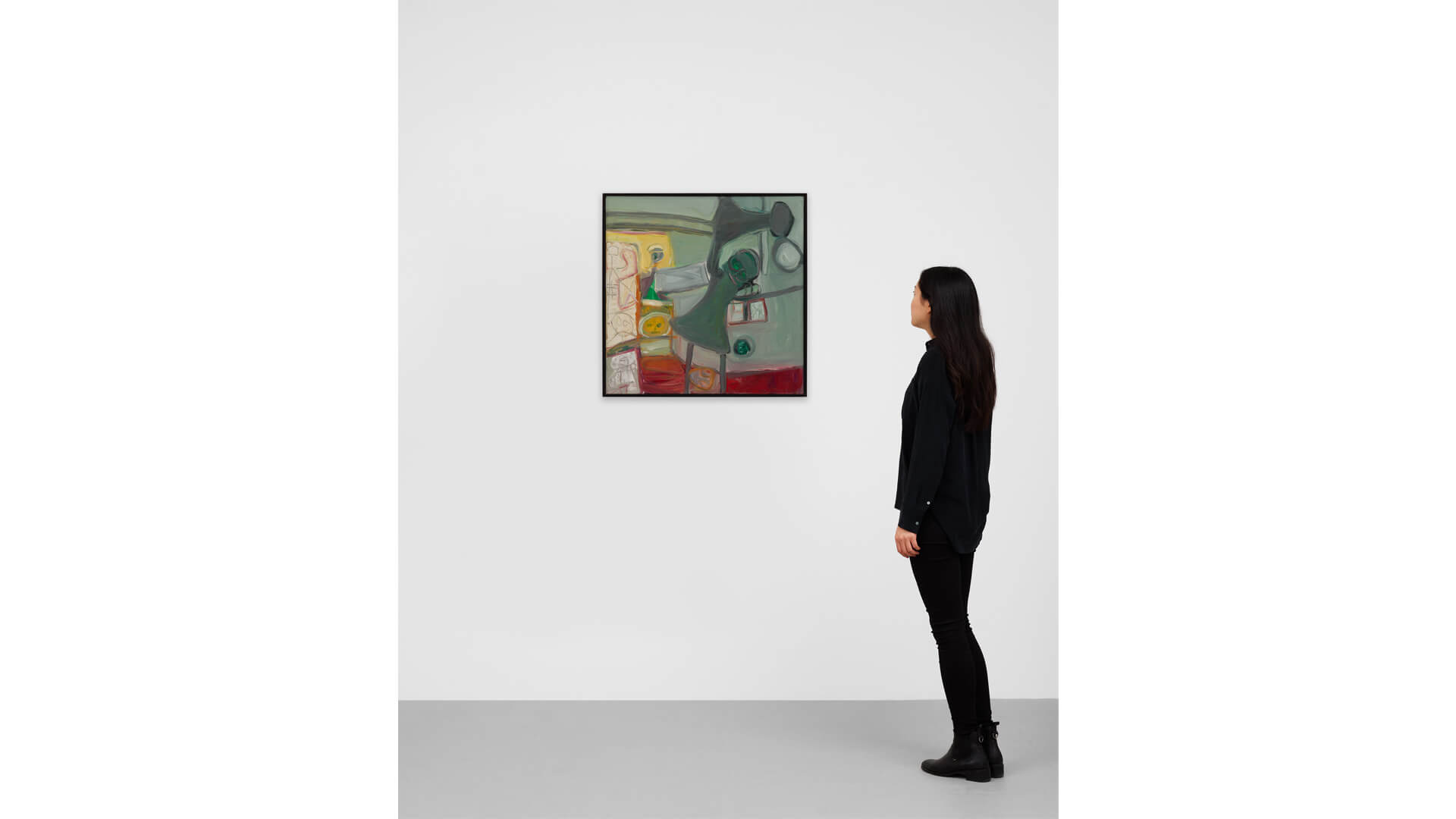
To the left of the spectre are irregularly stacked boxes containing (or, imprisoning) simple faces and figures that Hesse has rendered in a childlike fashion. The square containers predict what was to come in Hesse's oeuvre: in 1963 and 1964 the artist created paintings and drawings that were structured with small, 'boxed-in' rectangular shapes housing bold, expressive output within their irregular, hand-drawn, geometric delineations. Hesse leveraged her box motif to imply three dimensions, brilliantly transposing structural constructions to flat surfaces.
The 'Spectres' are incredibly private works; Hesse made them for herself and did not exhibit them during her lifetime. She literally painted her Self out, working through form and material in an act of highly vulnerable and even painful introspection. Even now, looking at the 'Spectres' can feel a bit intrusive. But by watching Hesse 'paint herself out' we can see just how, and with what difficulty, she navigated her way into the art world and embraced her burgeoning maturity.
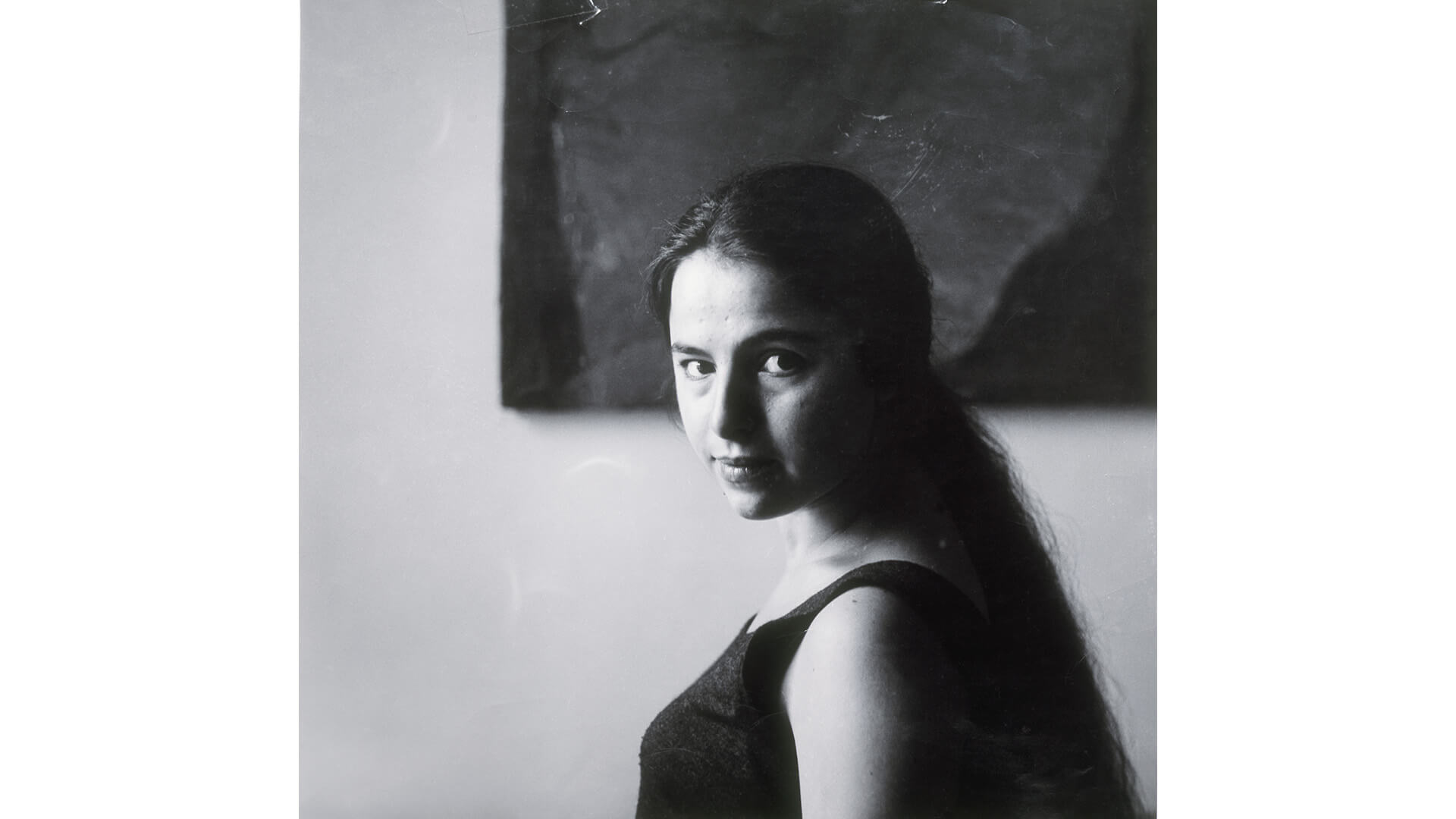
Eva Hesse
Born in 1936, Eva Hesse was one of the icons of American art in the 1960s, her work being a major influence on subsequent generations of artists. Comprehensive solo exhibitions in the past 30 years as well as a retrospective that toured from the San Francisco MoMA to the Museum Wiesbaden and finally to the Tate Modern in London, have highlighted the lasting interest that her oeuvre has generated. Hesse cultivated mistakes and surprises, precariousness and enigma, in an effort to make works that could transcend literal associations. The objects she produced, at once humble and enormously charismatic, came to play a central role in the transformation of contemporary art practice.
© The Estate of Eva Hesse
